In June I photographed three events connected to the housing crisis in London, and in particular to the loss of social housing as London councils, mainly Labour dominated, rush to realise the asset value of the sites that council estates are built on.
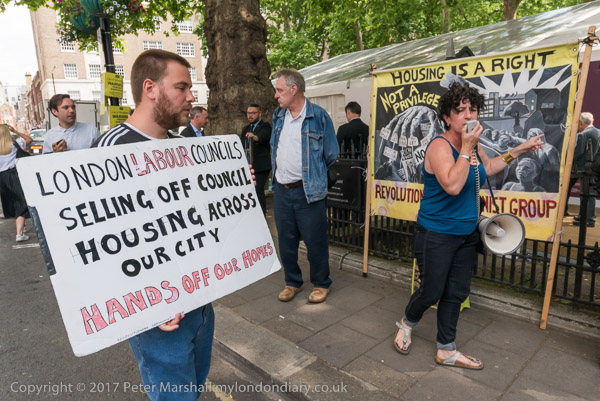
Many London council estates are built in places that have good transport links to the City and West End where some are fortunate to have well-paid jobs and want somewhere convenient to live and can afford to pay the ridiculously high London market rates – well beyond the means of the average worker and of key public sector workers including teachers, social workers, police etc. Many Londoners are forced to live on the outskirts and travel in to work, often with long journey times.
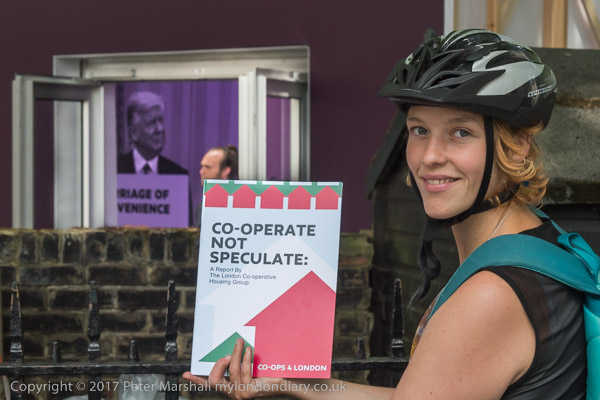
Council housing generally pays for itself with rents half or often considerably less than market rents, providing housing that those on average or lower incomes can afford. But when council estates are demolished, their replacements involve little if any truly low cost housing, and often only a token amount of ‘affordable’ housing, which at up to 80% of market cost is usually well beyond most people. Often existing tenants are made promises of rehousing, but end up paying twice as much rent as before and with a less secure tenancy and usually in a far less convenient area. Those who have bought their properties find the compensation they get is only around half the cost of inferior properties built on the site of their former homes, and are forced to move, often to the edges of London and beyond.
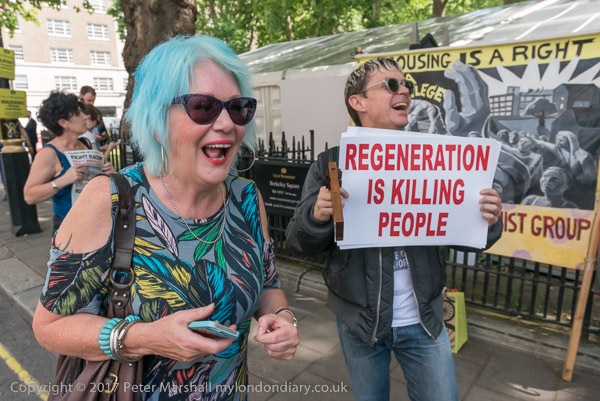
Councils team up with private developers or with housing associations which are now little different to private developers, with the result that huge publically owned estates and properties become privately owned. It’s a bonanza for the shareholders, but a tragedy for the residents, and often fails to deliver for the councils, though a few councillors and council officers seem to end up with lucrative jobs in the private housing sector. Calling it ‘Regeneration’ is a con, though the policy comes from New Labour but its application is part of a long history of corruption in local politics by politicians of all parties.
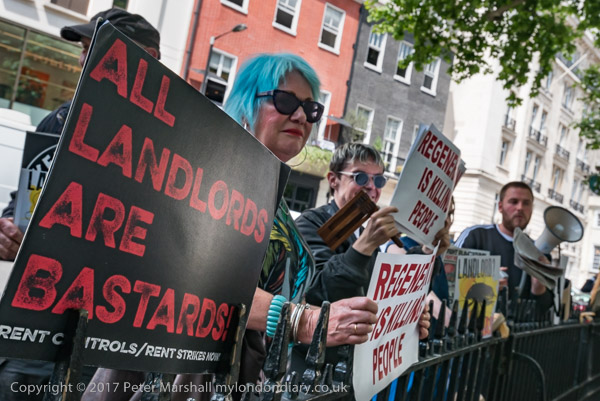
The first two protests were outside the Berkelely Square London Real Estate Forum, an annual event involving council, architects and developers all after a piece of the lucrative cake from the private development of what is currently public housing, transforming what are now homes for the low paid into homes for the wealthy and investments often kept empty for overseas investors relying on the increase in prices on the London housing market.
Some of the estates that have been demolished or that councils intend to flatten are of genuine architectural merit, and many more are communities that have developed to give a decent life to those who live there and want to remain. Often they have suffered from a lack of maintenance over the years and need some bringing up to current standards for example of insulation, but most older properties were built to higher standards of space and basic construction than currently apply.
The Heygate estate deservedly won an architectural medal and its basic concepts were sound and despite a long attempt by Southwark to demonise it, using it to house problem residents and employing a PR firm to do it down, remained popular with many residents and was developing into a maturity. The council actually gave it away, making a loss on the deal which has converted it into the private Elephant Park. And rather than learning from their mistakes they are currently repeating them on the nearby Aylesbury Estate and others in the pipeline.
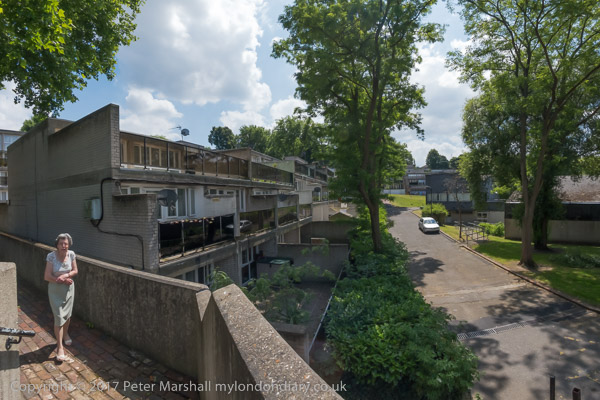
Another fine estate under threat, this time from Lambeth Council, is Central Hill and I was pleased to be able to be there when former Lambeth Council leader Ted Knight came to speak about the vision that led to its building, that nothing was too good for the working class. Now Lambeth want the working class to be forced out of the area. Our current listing process, run by Historic England, has shown itself to be averse to listing large projects of considerable architectural merit such as this, or the Robin Hood estate in Poplar, in favour of quirky oddities with some popular appeal (such as Philip Larkin’s former flat in Hull) which involve little or no financial considerations.
Stop demolishing council estates
London Co-operative Housing Group report
Ted Knight speaks for Central Hill
______________________________________________________
There are no adverts on this site and it receives no sponsorship, and I like to keep it that way. But it does take a considerable amount of my time and thought, and if you enjoy reading it, a small donation – perhaps the cost of a beer – would be appreciated.
My London Diary : Buildings of London : River Lea/Lee Valley : London’s Industrial Heritage
All photographs on this and my other sites, unless otherwise stated, are taken by and copyright of Peter Marshall, and are available for reproduction or can be bought as prints.
To order prints or reproduce images
________________________________________________________